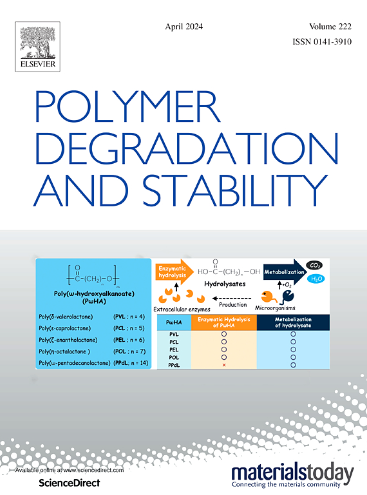美国聚羟基烷酸酯的寿命终止气候影响:原料变异性和时间动态的作用-一项系统综述
IF 7.4
2区 化学
Q1 POLYMER SCIENCE
引用次数: 0
摘要
生物基和可生物降解的生物塑料,如聚羟基烷酸酯(pha),为石油基塑料提供了一种可持续的替代品,解决了与塑料废物相关的日益增长的担忧。与此同时,它们的生命终结(EoL)路径在决定其整体可持续性方面起着关键作用。这项工作比较了先前的研究,这些研究使用基于美国的生命周期评估(LCA)策略报告了PHA的各种EoL途径对气候的影响。这些途径包括填埋、回收、焚烧、堆肥和厌氧消化(AD),使用方法工具WARM、SimaPro和GREET进行评估。研究发现,由原料类型(如玉米秸秆与甘蔗甘蔗渣)驱动的可变性仅影响回收途径,其中聚合物的成分在EoL时保持不变,但原料类型改变了环境信用值。相比之下,观察到跨时间范围(GWP20、GWP100、GWP500)的变变性主要影响填埋和AD途径,更长的时间范围放大了填埋中甲烷相关的影响和AD中的碳固存效益。此外,分析发现,由于甲烷排放量高,垃圾填埋场在所有时间范围内具有最高的全球变暖潜能值(GWP),而回收利用通过提供信贷抵消和适应循环经济提供了最大的气候效益。此外,AD途径在美国的建模工作有限,尽管它是欧洲研究最多和占主导地位的途径之一。本文章由计算机程序翻译,如有差异,请以英文原文为准。
End-of-life climate impacts of polyhydroxyalkanoates in the United States: the role of feedstock variability and temporal dynamics - a systematic review
Biobased and biodegradable bioplastics, such as polyhydroxyalkanoates (PHAs), offer a sustainable alternative to petroleum-based plastics, addressing the growing concerns associated with plastic waste. At the same time, their end-of-life (EoL) pathways play a critical role in determining their overall sustainability. This work compares previous studies that report the climate impacts of various EoL pathways of PHA using Life Cycle Assessment (LCA) strategies which are based in the United States. These pathways include landfilling, recycling, incineration, composting, and anaerobic digestion (AD), as assessed using the methodological tools WARM, SimaPro, and GREET. Variability driven by feedstock types, such as corn stover vs. sugarcane bagasse, was found to affect solely the recycling pathway, where the polymer’s composition remains unchanged at EoL, but the feedstock type alters the environmental credit value. In contrast, variability across time horizons (GWP20, GWP100, GWP500) was observed to predominantly influence the landfill and AD pathways, with longer horizons amplifying methane-related impacts in landfilling and carbon sequestration benefits in AD. Also, the analysis finds that landfilling has the highest Global Warming Potential (GWP) across all time horizons due to high methane emissions, while recycling offers the most climate benefits by providing credit offset and fitting to a circular economy. Furthermore, the AD pathway has limited modeling efforts in the United States even though it is one of the most studied and predominant in Europe.
求助全文
通过发布文献求助,成功后即可免费获取论文全文。
去求助
来源期刊

Polymer Degradation and Stability
化学-高分子科学
CiteScore
10.10
自引率
10.20%
发文量
325
审稿时长
23 days
期刊介绍:
Polymer Degradation and Stability deals with the degradation reactions and their control which are a major preoccupation of practitioners of the many and diverse aspects of modern polymer technology.
Deteriorative reactions occur during processing, when polymers are subjected to heat, oxygen and mechanical stress, and during the useful life of the materials when oxygen and sunlight are the most important degradative agencies. In more specialised applications, degradation may be induced by high energy radiation, ozone, atmospheric pollutants, mechanical stress, biological action, hydrolysis and many other influences. The mechanisms of these reactions and stabilisation processes must be understood if the technology and application of polymers are to continue to advance. The reporting of investigations of this kind is therefore a major function of this journal.
However there are also new developments in polymer technology in which degradation processes find positive applications. For example, photodegradable plastics are now available, the recycling of polymeric products will become increasingly important, degradation and combustion studies are involved in the definition of the fire hazards which are associated with polymeric materials and the microelectronics industry is vitally dependent upon polymer degradation in the manufacture of its circuitry. Polymer properties may also be improved by processes like curing and grafting, the chemistry of which can be closely related to that which causes physical deterioration in other circumstances.
 求助内容:
求助内容: 应助结果提醒方式:
应助结果提醒方式:


